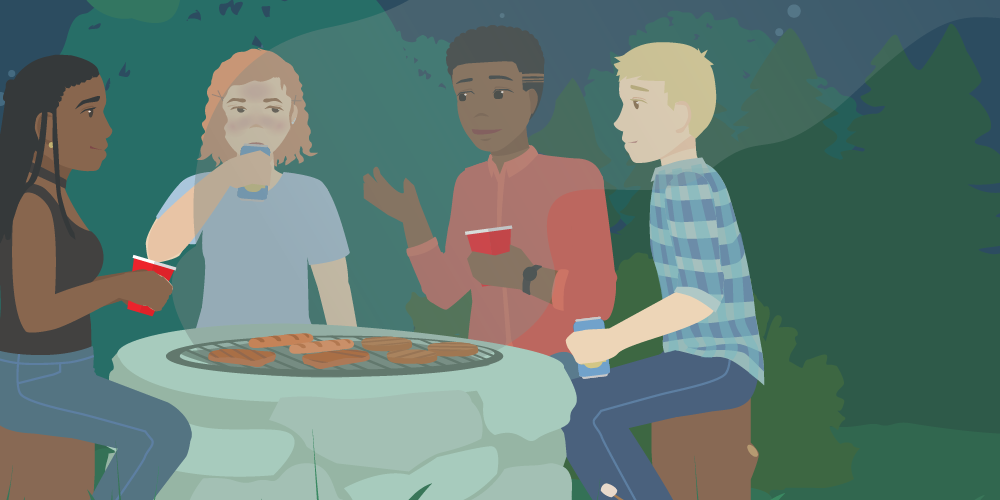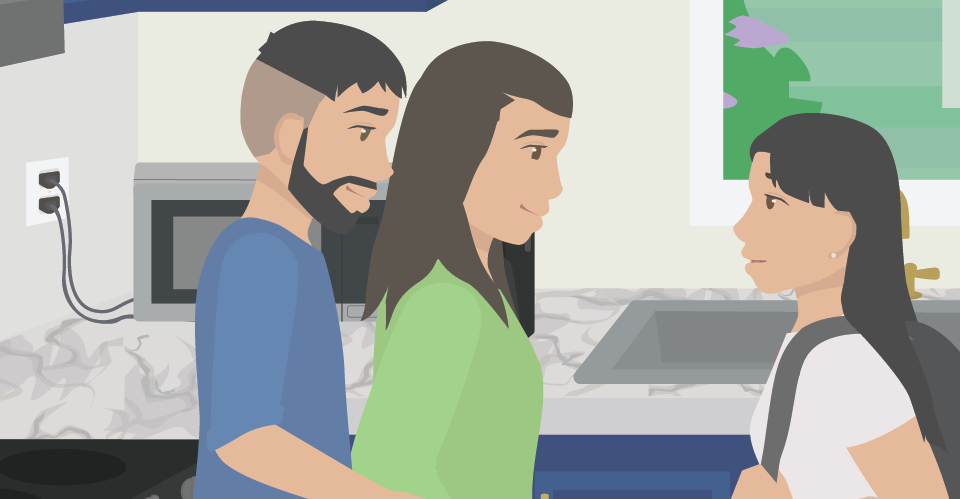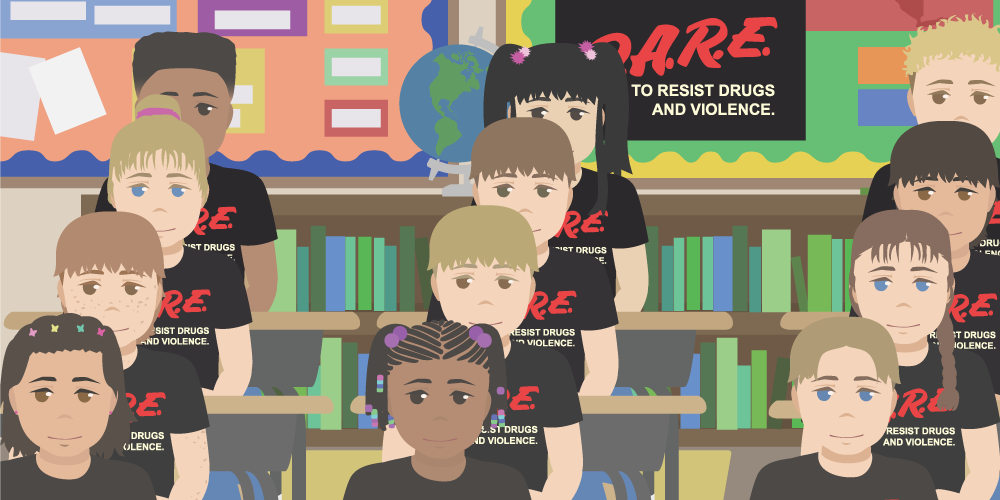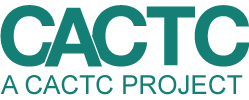D.A.R.E to Resist Drugs and Violence.
Many of us 80s, 90s and early 2000s kids have those red letters engrained in our memories (and may still have a T-Shirt tucked away in a drawer). Guess what—D.A.R.E actually didn’t work! According to the D.A.R.E website, the program had little to no long-term impact on drug use (aka we were not less likely to use alcohol or other drugs because we sat through the 17 lesson long D.A.R.E program).1
Luckily, drug and alcohol prevention is a bit different these days (and so is the number of teens in Cortland County drinking!).
Before I get into the details, I want to give a shoutout to all the teachers, administrators and law enforcement officers who put time and energy into this program. At the time it was the leading drug prevention program in the country. The investments made into this program are a huge testament to how much communities care about preventing youth from using drugs.
What Happened?
In 1999, after years and years of kids receiving D.A.R.E programming, the American Psychological Associated released a study showing that there were limited differences between kids who received D.A.R.E programming and kids who had regular drug education curriculums provided by a health teacher.2
Ten years after receiving the program, D.A.R.E kids were NOT less likely to use drugs, have negative attitudes about drug use, or have higher self-esteem.2
I should also note that there were several studies prior to this one that had similar findings that D.A.R.E had no, or very little, effect on drug use (and several since).

What Should Parents Do?
It can be discouraging to hear that programs like D.A.R.E didn’t work. Especially when you consider all of the time, money, and other resources that communities put into the program. But, as I said earlier, prevention looks quite different these days (even in Cortland County) and parents can play a major role in influencing whether or not their teen uses alcohol.
Changing the Environment
One of the best ways to reduce underage drinking is to prevent teens from accessing alcohol in the first place. Despite the fact that some parents would prefer their teens to drink at home, under their own roof, studies show that there is no protective benefit to parents supplying their children with alcohol.4
Based on our local youth survey, the number one place that teens access alcohol here in Cortland County is at home with parental permission. However, even though parents are the number one source of alcohol, most Cortland County parents are not providing their children with alcohol.
Only 11% of teens in Cortland County report they accessed alcohol from their parents in the past year, according to a 2020 survey of over 1,800 7th-12th graders.

As a community, parents can continue to work towards reducing underage drinking by pledging to not provide their kids (or their kid’s friends) with alcohol.
Social Norms
One major finding in the underage drinking prevention world is that teens who think that their peers are drinking (even if it is not true) are more likely to drink themselves.5 For all of us folks who went through D.A.R.E it can be easy to fall into the trap of telling kids to just say no to drugs.
A stronger message is to actually tell kids that their friends are saying no to drugs (and it’s based on real data, in their actual community). It’s important for us adults, and parents, to not suggest to teens that everyone is drinking.5
The fact is that, based on our local youth survey of Cortland County 7th-12th graders, those who have ever used alcohol reduced from 45.6% in 2015 to 32.7% in 2021.1 Also, alcohol use in the past 30 days among 7th-12th graders show a steady decline from 22.6% in 2015 to 13.6% in 2021.1That is excellent news, and something parents can share with their kids.
While DARE was a well-intentioned program, it ultimately proved to be unsuccessful in reducing alcohol use among young people. Research has shown that programs that focus on providing accurate information about alcohol use and its potential consequences, as well as developing strong decision-making and refusal skills, are more effective in preventing substance abuse. As parents, it’s important to have honest and open conversations with our children about alcohol use and its potential risks and to provide them with the knowledge and skills they need to make safe and responsible choices. By taking an evidence-based approach to alcohol education, we can help our children make informed decisions that will protect their health and well-being.
References:
- Cortland Area Communities That Care (CACTC). Results and Analysis: The 2022 Cortland County Youth Survey. https://www.cortlandareactc.org/publications. March, 2023.
- The History of D.A.R.E. D.A.R.E. https://dare.org/history/
- Lynam, D. R., Milich, R., Zimmerman, R., Novak, S. P., Logan, T. K., Martin, C., Leukefeld, C., & Clayton, R. (1999). Project DARE: No effects at 10-year follow-up. Journal of Consulting and Clinical Psychology, 67(4), 590–593. https://doi.org/10.1037/0022-006X.67.4.590
- Eijnden RVD, Mheen DVD, Vet R, Vermulst A. Alcohol-Specific Parenting and Adolescents’ Alcohol-Related Problems: The Interacting Role of Alcohol Availability at Home and Parental Rules*. Journal of Studies on Alcohol and Drugs. 2011;72(3):408-417. doi:10.15288/jsad.2011.72.408.
- Haines M. P, Perkins H. W., Rice R. M., and Barker G. A Guide to Marketing Social Norms for Health Promotion in Schools and Communities. 2005. Retrieved from: http://www.socialnormsresources.org/pdf/Guidebook2.pdf
This article was updated on April 4, 2023.



